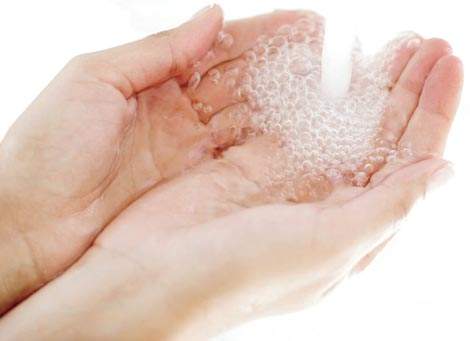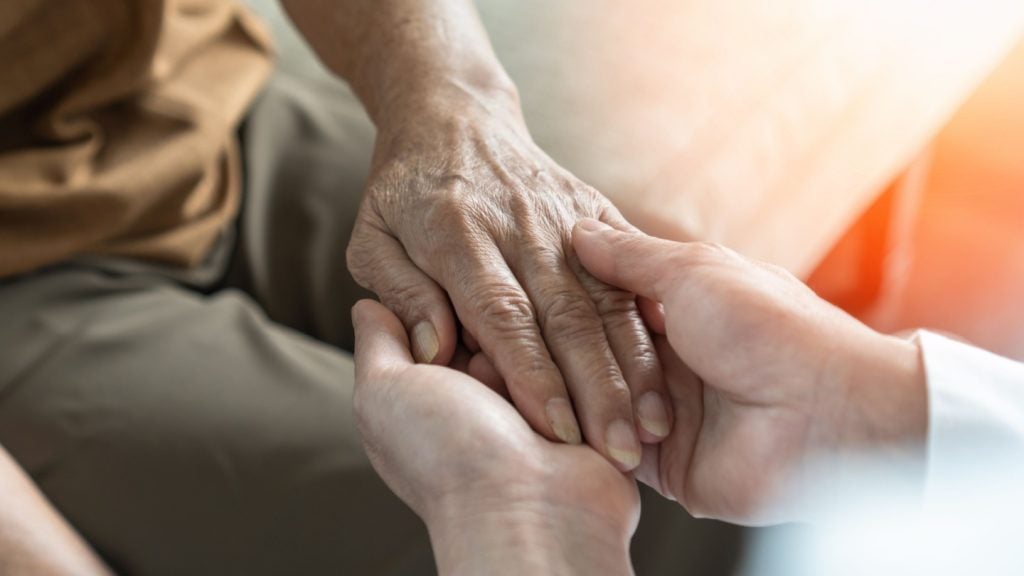
I had intended to write this article from a clinical perspective, but the events of the last few months have changed that. Instead, this article will focus on infection control procedures and products – from a patient’s viewpoint. Unfortunately, I have to tell a tale of disregard for patients and healthcare workers alike. Let me start this article with a little background.
Having visited my surgeon, it was determined that I needed to have neck surgery, and it was scheduled for the next week.
I arrived at the designated hour and, after filling out the necessary paperwork, I was taken to the surgery preparation area. The anaesthesiologist came over to talk to me.
After talking about medication, allergies and whether or not I get nauseous after anaesthesia, I began to talk to the doctor about sharps safety. I talked with him about the necessity of using safety-engineered needles. I had even brought him a sample and a brochure of a safety product that I was aware of.
While I was talking to the doctor, a nurse started to take my
blood pressure and temperature. All of a sudden I felt a prick in my hand. I looked away from the anaesthesiologist to see the nurse putting an IV catheter into my hand.
I was upset to see that she did not have gloves on and had not washed her hands prior to inserting the needle. I indicated that I was concerned that she was not wearing gloves, and informed her that she was breaking OSHA guidelines and that her facility could be fined up to $70,000 for a wilful violation since they knew better. She told me that she just wasn’t able to feel the veins well enough with gloves on.
How well do you really know your competitors?
Access the most comprehensive Company Profiles on the market, powered by GlobalData. Save hours of research. Gain competitive edge.

Thank you!
Your download email will arrive shortly
Not ready to buy yet? Download a free sample
We are confident about the unique quality of our Company Profiles. However, we want you to make the most beneficial decision for your business, so we offer a free sample that you can download by submitting the below form
By GlobalDataI was taken to surgery and seemed to be recovering well. I went back to see my surgeon one week after surgery to have a check up and then went over to the hospital to visit the infection control manager. She appeared horrified at my story and indicated that the lack of gloves and handwashing was contrary to hospital policy and apologised profusely.
Four days later, I found myself back in the hospital with over half a litre of pus draining out of one of my two incisions. I was readmitted to the hospital, and over the course of the next week had to have four more surgeries, and untold number of antibiotics and dressing changes.
During my confinement I witnessed numerous infection control issues. These problems included:
- Not washing hands between each patient
- Not changing gloves between each patient
- Not wearing gloves when touching an infected wound
- Not changing gloves after touching an infected wound
- Very long fingernails (over one inch in length)
- Improper techniques for changing dressings (changing dressing of infected area first, changing dressing of uninfected area second)
I was surprised to see such a lackadaisical attitude towards following standard infection control guidelines. The extent of my infection meant that I had to have a peripherally inserted central catheter placed in my arm with the tip up in my superior vena cava, just above my heart. This PICC was used to give me antibiotics every six hours for seven weeks.
I am well aware of the number of individuals that become sick from nosocomial infections each year. According to the centres for disease control and prevention, hospital and healthcare-related infections affect more than two million patients each year, 250,000 of which are related to infections around catheters, intravenous lines and other insertion sites. Many of these infections can be prevented.
It infuriates me that the public has to put up with this issue. I mean, how difficult is it to wash your hands and wear gloves? This is not new technology.
A HISTORICAL VIEW
Unfortunately, handwashing has typically been a hard concept for many clinicians. Dr Ignaz Philipp Semmelweis of Vienna recognised the value of clinicians washing their hands in 1847. Dr Semmelweis, as a medical student, worked on a study in a hospital ward where physician-attended births had a mortality rate as high as 31%. This mortality rate contrasted sharply with the low mortality rate in the midwives’ ward that was located nearby.
Dr Semmelweis reported to his physician associates an incredible idea – washing hands could save lives. His research showed that pregnant women often developed fatal infections following hospital births – when treated by doctors with unwashed hands. However, mothers who were treated by doctors that scrubbed their hands thoroughly with soap and water before being examined and treated rarely developed the same type of fatal infections.
Were his peers excited about the research and willing to change their bad habits to save their patient’s lives? Unfortunately, his peers thought he was crazy and forced him out. It would be years before washing hands was adopted as a standard practice amongst clinicians. However, handwashing did finally catch on. Most clinicians adopted hand washing and infection rates came down. So what has happened since then? Unfortunately, many clinicians have not kept up the commitment to good hand hygiene.
It has been estimated by Michael Berens of the Chicago Tribune that over 103,000 patients died in the USA in 2000 as the result of infections acquired after they entered the hospital. Almost three quarters of these hospital patients would be alive if clinicians had just followed well-established standards of care and hygiene.
Berens indicates that handwashing alone could prevent up to 20,000 deaths in the USA each year. "Clean hands are the single most important factor in preventing the spread of dangerous germs and antibiotic resistance in healthcare settings," says Dr Julie Gerberding, director of the CDC.
CHANGING PERCEPTIONS
So how do clinicians feel about hand hygiene? Many clinicians believe that they wash their hands much more than they actually do. Studies indicated that nurses think that they wash their hands up to three times more than they actually do. Handwashing compliance for physicians is only 30–50%.
Proper hand hygiene is important to professional organisations and regulatory agencies such as the CDC, the Joint Commission on Accreditation of Healthcare Organisations (JCAHO), OSHA, and APIC – they have all made it a top priority.
I find myself asking why healthcare workers don’t comply with handwashing guidelines. Aren’t they aware of the importance of handwashing in preventing nosocomial infections? As indicated above, many of the clinicians actually think that they have washed their hands more than they have. Other excuses made by clinicians include:
- Being too busy
- Lack of convenient access to a sink
- The worry of skin irritation and dryness from constant washing
- Wearing gloves
- Just not thinking about it
As a patient that came down with a horrendous staph infection it infuriates me that it was most likely the little things that were the cause. Cutting the corner with handwashing is just not excusable. It doesn’t take that long to wash your hands. Washing hands with soap and water between patients should take at least a full minute. This is often skipped in order to save time, particularly in emergency rooms and intensive care units.
Unfortunately, these busy units have a high potential for spreading germs. Sometimes, the physical layout of a hospital can exacerbate this problem, when it takes an inordinate amount of time to run back to a sink between patients. Convenience, or the lack thereof, is one of the biggest reasons why clinicians do not wash as frequently as they should.
As I convalesced in my hospital bed and later at home, I found myself asking each clinician and home health nurse to wash as they approached my bed. I didn’t want to get another infection. Most of the clinicians opted to use an alcohol gel instead of soap and water.
ADVANTAGES OF ALCOHOL GELS
These alcohol-based gels can be used much quicker than soap and water handwashing. This is very important for overburdened clinicians.
"Healthcare personnel are always on the go which sometimes makes handwashing with soap and water difficult," says Dr Steve Solomon, acting director of CDC’s healthcare quality promotion division. "These hand rubs should help promote hand hygiene because they are much more accessible than sinks, take less time to use and cause less skin irritation and dryness than many soaps.
The CDC estimates that over an eight-hour shift, an ICU nurse could save an hour by using an alcohol-based gel. The use of an instant hand sanitiser can cut the time needed for compliance by 75%."
One reason for not using alcohol gels in the past has been the fear that they can lead to dry skin. The truth is exactly the opposite.
Alcohol-based hand gel is beneficial to the skin because of the protective fats and oils that remain on the hands as the alcohol dries. Most of the alcohol gels contain emollients. This means that alcohol-based gels cause less skin irritation and dryness than soap and water handwashing and actually moisturise the skin.
Concerns about flammability of alcohol gels led some institutions to ban alcohol gels throughout a hospital. Recently, however, the executive council of the Hospital Fire Marshals’ Association voted unanimously to support the installation of alcohol-based hand washing gels in hospital corridors. This clears the way for the convenient alcohol gels to be used throughout hospitals, clinics and physicians’ offices.
I believe that the use of an alcohol gel helps to provide better communication with a patient and allows the patient to see that a doctor is taking care of their health by hand cleansing right in front of them. By simply dispensing a little of the product and rubbing hands together, the physician or nurse can begin their evaluation of the patient while cleaning their hands. This is an advantage because the clinician does not have to have their back to the patient.
It is my hope that clinicians will make the effort to protect both patients and themselves by taking the time needed for proper hand hygiene. This is a battle that can be won through diligent efforts.







